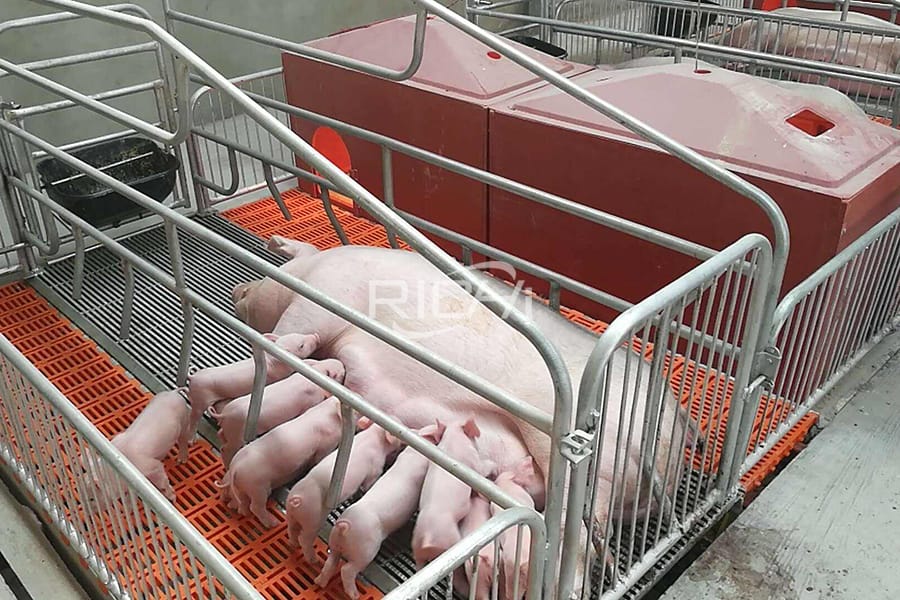8 steps for effective cleaning and disinfection of empty fences on family farms
Many family farms have undergone thorough decontamination for the first time after the African Swine Fever has been empty. Even pig farms that have had the experience of resuming production still have incomplete decontamination and failure in resuming production.
For the pig farm: the decontamination steps are chaotic, the personnel operation causes safety hazards, a lot of manpower and material resources are wasted, the time for resuming production is delayed, and the final inspection still fails to meet the requirements for re-production. Faced with the limited conditions of family farms and the tight preparation time for re-cultivation, we summarized more than 50 family farms of different sizes in the past year, and the feasibility plans and precautions for decontamination of empty columns were summarized.

1.Clean up
Clean up large objects, and clean up the accumulated feces and feed residues to the extent that the subsequent washing can clean the building with 1 or 2 washings. Removable tools such as lamps and faucets are removed from the building for cleaning and disinfection. Burnable items such as feed bags, brooms, and burned nearby. Finally, scrape the manure board to clean the manure ditch.
Note:
·After the pig herd is emptied, the debris in the pen should be handled as soon as possible to reduce the difficulty of subsequent washing and reduce the flow of mosquitoes, rats and ants.
·Move out the building materials and people flow to maintain a unified channel flow, this channel is all disinfected with lime slurry + caustic soda, to prevent the expansion of pollution outside the building.
2.Wash
High temperature and high pressure washing. This step is the difficulty and key point of the whole re-production and decontamination. It is recommended to wash carefully at a uniform speed to solve all the troughs, taps, slat gaps, exhaust fans, windows, doors, and even the ceiling The feces, pig hair, blood stains and pig secretions, residues, etc. may all exist in the corner of the virus for a long time.
Note:
·Pay attention to leakage protection to ensure washing safety
·Check the entire column after washing, and mark with a talc pen (side of slatted board, angle between doors and windows, upper slope of trough, wall and floor damage, etc.)
3.Spraying
Quick cleaning or caustic soda dilution spray the whole column, make sure the column PH>13, stay for at least 30 minutes, focus on washing the marked area, rinse the whole column with clean water several times.
Note:
·Wear eye masks and waterproof clothing to prevent burns.
4. Disinfection
Mietoweijia (potassium hydrogen persulfate) 1:100 scrubbing the switch in the barn, water line disinfection; 1:200 spraying doors and windows and water curtain cycle disinfection
Note:
·All fence repair and cleaning work should be completed in this step.
5. Inspection
The gauze saline infiltration wipes the walls and the floor, the cotton swab is infiltrated with physiological saline to scrape the gaps in the other bars, switch the handle, and send it to the relevant agency to check the disease.
Note:
·This step is advanced to after washing and disinfection, mainly to check whether all biological samples are cleared out of the shed, and to prevent the inconvenience caused by repeated work.
6.Drying
Close the doors and windows, close the water curtains, fans, vents, and after the building is heated to above 60℃, ensure that it is dry and sterilized at a constant temperature for more than 30 minutes.
Note:
·The fan can be turned on in advance to draw out the remaining moisture in the pen to speed up the drying.
·In the column, from the ceiling to the vertical area of the ground, the fan to the horizontal area of the water curtain, prepare at least four thermometers to prevent the top temperature from being too high, melting the line, and preventing the partial sealing from being tight and affecting the high temperature effect.
7.Roasting
The flame is directly grilled, especially in the dead corners, the plane stays for 5 seconds, and the gap groove stays for 15 seconds.
8.Albinocolumn
10%-20% lime milk + 2% caustic soda spray pens to ensure that after albino pens to at least 1 week before entering pigs, dry pens and alkaline environment control the growth of pathogenic microorganisms in pens.
These 8 steps are completed within 1-2 weeks to prevent repeated wetting of the stalls to accelerate the propagation of pathogenic microorganisms. The above steps are completed, and the fence is closed.
[More info abour pig farms]
Prevention and control of diseases in large-scale pig farms
Points when purchasing equipment on a pig farm
Some pig farm construction issues that pig farmers need to pay attention to
Improvement of production technology and equipment transformation of pig farm
How to do a good job in the green construction of pig farms?
How to deal with the waste of the pig farm so that it will not be polluted again?
The difference between the construction of factory pig farms and traditional pig farms
What points should be paid attention to when purchasing equipment on a pig farm?
Small scale pig farm design in rural areas—scientific pig raising at the lowest cost
How can pig farm management be done to maximize profit?
Construction technology and facility configuration of large-scale pig farms
Keeping the pig farm warm is the key
If you want to built one complete pellet production line in your country, pls send the inquiry to us. We will customized design according to your requirement.



